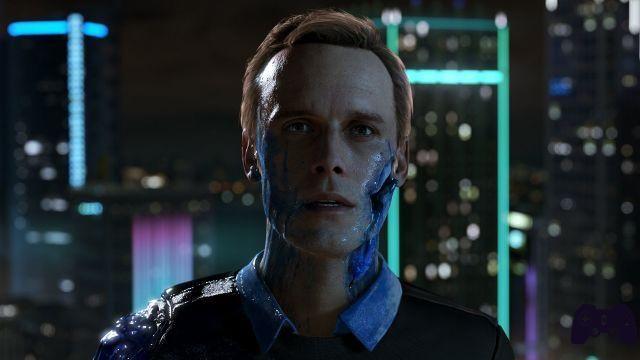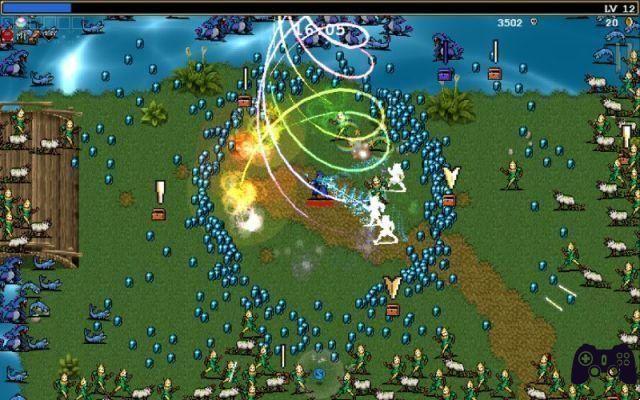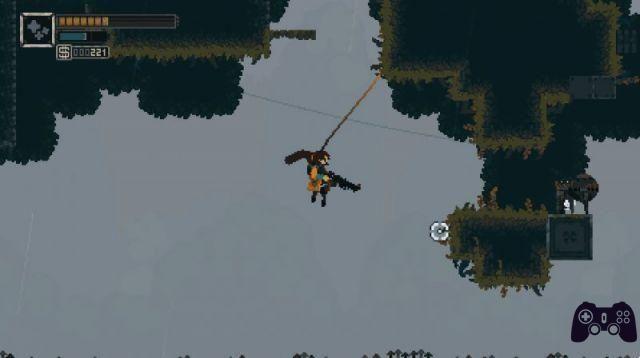Announced and published by surprise, after years of its existence being rumored, Metroid Prime Remastered is a remake, according to its own (very humble) statement a remastering of the masterpiece. retro studies dated 2002. A game that obtained a Metacritic score of 97 and over the years its myth, also thanks to a progressive rarefaction of the saga, has increased spectacularly. As written at the beginning, Metroid Prime Remastered was announced and published instantly, almost as if it were a secondary project; Nothing could be more wrong. The quality of the work carried out by Retro Studios, helped by other satellite teams, manages to transport one of the best gaming experiences of this century to modernity and, consequently, make us optimistic for the fourth episode (from 2019 there in Texas, after essentially useless two years, rumor has it at Bandai Namco Singapore).
For those who don't know, Metroid Prime was defined at the time as a First Person Adventure, unlike the prevailing genre at the time, First Person Shooters, obviously. A cataloging that is perhaps instrumental and rarely repeated, but that makes the essence of the work clear: Metroid Prime is in first person and yes, in Metroid Prime you shoot, but the soul of the game lies mainly in exploration. It's a faithful three-dimensional transposition of the Super Metroid core and, in retrospect, is the best three-dimensional metroidvania ever developed.
In 2002, several Nintendo products were released on the GameCube, including The Legend of Zelda: The Wind Waker and Super Mario Sunshine: when they were announced, also due to the tumultuous problems that had involved Retro Studios (founded in 1998, and still no publications). in 2002), no one could have thought that Samus Aran would be the protagonist of the best game. And yet it was: GameCube remains to this day the only Nintendo platform whose best title, without much discussion about it, is an episode of Metroid. In the 8st century, also due to the slowdown in releases, Nintendo has published fewer masterpieces than before: Metroid Prime is certainly among them, along with, to name a few, Super Mario Galaxy, Mario Kart XNUMX and The Legend of Zelda : Breath. of the wild.
For this reason this Metroid Prime Remastered Review It's a small event: it's the opportunity to talk again about one of the best games of all time, this time revised and corrected so that modern players can also enjoy it.
The game
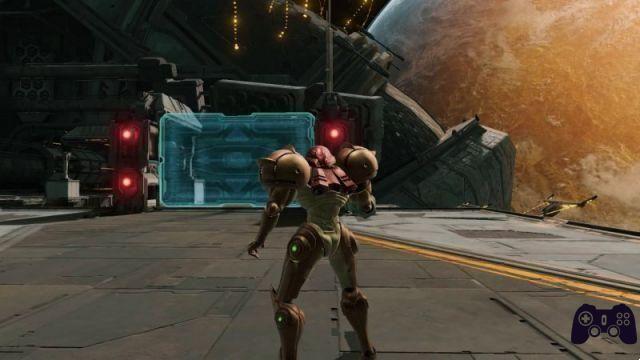
Metroid Prime Remastered, ven game design and level design, is practically identical to the original; We noticed some minor differences, such as the Reload Ray, which takes longer, but they are trifles. It's very important to shoot and fight your way through enemies, but despite appearances, the heart of the job lies in exploration and boss fights. The enemies you'll encounter on the map, while increasingly challenging, are largely "discursive", designed more to divert your path, perhaps to make you end up in a harmful section (e.g. a lava lake), and to speed you up. the experience. that endangers his life. The world of Metroid Prime is largely made up of tunnels and tunnels, linking more open and stratified areas: it's a metroidvania in every respect, in fact, it's a kind of Bible for how three-dimensional metroidvanias should be created.
During the exploration you will find sections, whether they are doors or particular territorial conformations, that prevent you from reaching a certain area at that time: you will have to continue, find the appropriate "new power", and you will be able to access that passage to which you had previously been prohibited to do so. The essence of the game is basically this: what makes it exceptional is the masterful level design and the varied nature of the powers themselves (from the Morphosphere, which allows you to roll like a "ball" and observe everything from another perspective, to the different types of Beam, going through the visors to scan the world in various ways, the Suits that allow you to explore different climates and environments...).
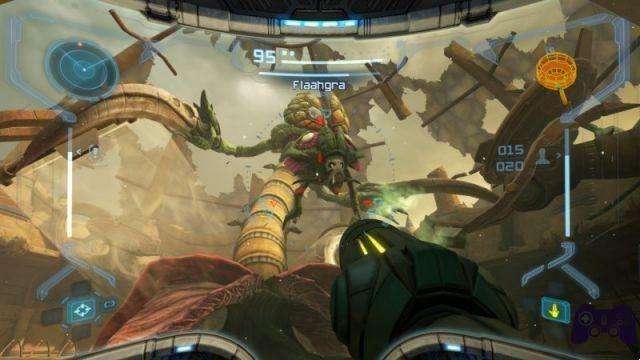
The other indisputable quality of Metroid Prime is its atmosphere. We have already told you about its tunnel character, which the first-person view even makes claustrophobic, and its sudden and airy openings; There are many biomes to cross on Tallon IV (the planet that hosts the adventure), almost all of them evocative and distinctive (honorable mention to the snowy Phendrana and the arid Ruins of Chozo), but the constant is that you are alone. Desperately alone, you evacuate to a savage planet inhabited by monsters, hoping to regain your powers. Also thanks to a very inspired soundtrack (mainly by Kenji Yamamoto), exploring Tallon IV means challenging, without help or emotional support, the fear of the unknown. The progression of the adventure is essentially perfect, as is the overall management of its pacing; Metroid Prime is also one of the first cases in which a high-budget three-dimensional game manages the narrative by deepening the "lore", in particular exploiting the viewers to analyze the architecture and objects of the surrounding world, which propose, in front of the trailer of adventure, a parallel -and optional- cognitive path.
Metroid Prime Remastered still borders on perfection. We have some doubts about the different control systems proposed, which we will express shortly, and especially about certain mechanics that, in our opinion, have not aged very well. They work in this specific case, but might not appeal to anyone who has recently started playing or doesn't want to commit too much, especially on a mental level. Because Metroid Prime requires tactile skill, but above all considerable spatial visualization, as well as a lot of patience in case you get stuck. There map, which gives hints (can be disabled) if you don't continue, is really complicated: you can turn left and right, up and down, zoom in and out. It is conceptually identical to that of a 2D metroidvania, but the three dimensions exponentially increase the difficulty of navigation: finding and recognizing unexplored streets is not easy at all. Above all, and this is certainly an anachronistic feature, it is difficult to continue in the game in more ways than one, and for an exploratory title it is quite frustrating: you will find yourself stuck, and all you can do - besides unlock upgrades optional is trying to understand where to go to continue. When a new power is unlocked in a metroidvania, the feeling should be one of elation at the new paths it will allow you to explore, perhaps found at the beginning of the game. In Metroid Prime, if you're not careful, the opposite could happen: that is, as soon as you acquire a new power, it won't always be clear to you how it could be useful to you. Above all, we repeat, many times there is only one way to continue the adventure: when you don't understand it you will find yourself stuck, and without other important activities to do. The last aspect that has not aged very well, although typical of the genre (but more functional in 2D) is the continuous rebirth of the enemies, who have quite repetitive behaviors, and the limited environmental interaction, which however hides some very valuable ornamental details. . , like the drops falling on Samus's visor or the water rippling and shooting at us.
The controls
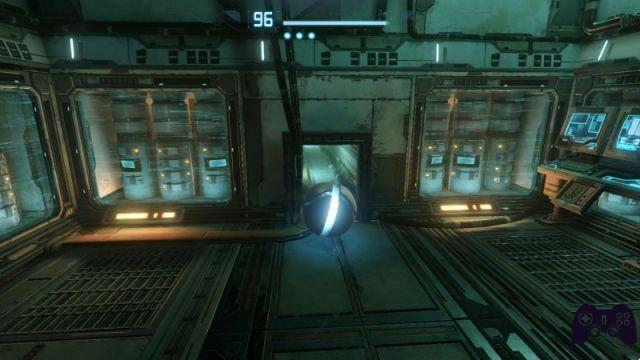
Metroid Prime Remastered's controls are great, both in terms of precision and reactivity. The way in which the Morfosfera reacts to the slightest reliefs, slopes and undulations of the ground continues to surprise twenty years later, as does the fluidity and naturalness with which Samus Aran goes from the first to the third person. The controls are even exceptional in the jump phases, not so much because of its complexity, but because of the chosen view, which would have suggested a simplification of this mechanic: but no, the sensation of jumping with precision is intact, and it is difficult to imagine what witchcraft is hidden behind it. . Because it is true that video games in general are made up of mirrors and smoke, to give the impression of functionality and cohesion, but in this case the spell is even more incomprehensible: as stated by Retro Studios, and in particular Mark Pacini (game director, who has now been away from the company for fifteen years), managed to give the impression of "precision" in the jumps, because that is what it is, it is difficult to conceive. Playing in first person we do not know what Samus's collider is, or rather its real "encumbrance" at the level of interaction (surely greater than what would have been in third person), but the final sensation manages to reproduce a sensation of fascinating precision, for anyone sensitive to certain characteristics and functional for everyone else. When you miss a jump, you never feel like the game is to blame.
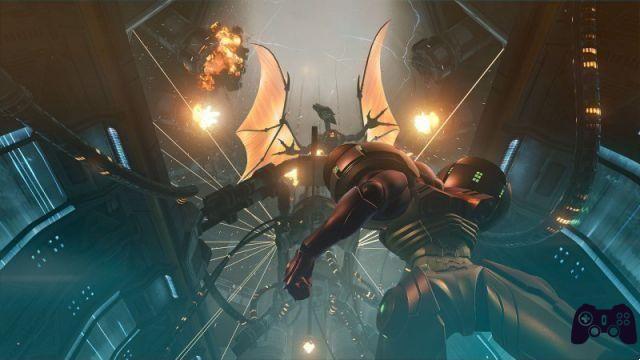
The control of Metroid Prime, in 2002, worked wonderfully; all this despite not allowing the use of the two analog sticks, which is the most popular and widespread system for FPS games on consoles. It was possible to target the opponent after blocking them and move around them without losing track of them; Being a title dedicated to exploration, you never felt like you were limited, although naturally the freedom of movement was less than that of a normal shooter. Metroid Prime Remastered offers several possibility of control, and they are all well structured. You can play with the classic system already seen on GameCube, and another that repeats it by supporting, at the same time (and only during the "aim" phases), the gyroscope. Added to these is the option completely relying on motion sensors, functional only with the Joy-Cons untied (curious that the developers have not bothered to block it in other situations), and the most widespread, which uses the two joysticks, one to move (the left one) and the other to aim (the right one). Now, as every Nintendo player knows, the highest degree of precision possible (on console) has been achieved by combining gyroscope support with this system, exactly as happens in Splatoon: a scenario also present in Metroid Prime Remastered, but there to look for, because it is not part of the four main control systems. You need to select the mode with the two control sticks and then add (in "visual") gyroscope support. As we said, they all work very well; The problem, and completely atypical for a Nintendo game, is that they offer non-equivalent alternatives. The classic control is effective, but also restrictive compared to the two joysticks. The latter, much less if it is assisted by the gyroscope, is too "free" for a title originally designed with the classic control system in mind. It's not a big problem, but we hope that in Metroid Prime 4 there will be fewer options, and above all that they will be more similar to each other, so that the developers can design the map, and the enemies, knowing exactly the speed (and freedom) of movement by Samus.
The graphics
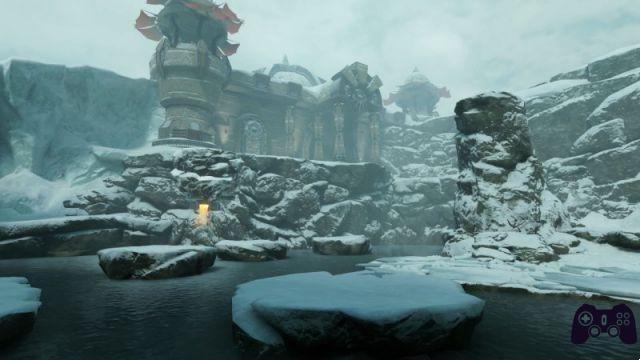
On a visual level, the work done by Retro Studios (and their assistants) is impressive. Metroid Prime Rematered is undoubtedly one of the most attractive games on Nintendo Switchand runs at a solid 60 fps. On a graphic level, the title has been completely reworked, starting with the polygonal models, to reach the most important thing, that is, the lighting system, capable of transporting - apparently effortlessly - Metroid Prime to modernity. We are not referring only to the lighting of the shots, to the reflection of Samus in the helmet, in general therefore to the improvement of what was already present in the game. We are mainly referring to the total overhaul of the lighting system: in Metroid Prime Remastered when it is dark, the screen does not go dark... it is literally in the dark, and the stage is illuminated only by the light sources present, be they bright flowers , lamps or holes through which outside light filters. The Chozo Ruins are really "hot": there is a beautiful effect, coming from a tunnel and approaching an open area, so the new section seems to blind Samus. Then, upon entering it, his eyes slowly adapt to the new "temperature", detailing the scenes. It is not just technical excellence, it is the most valuable art direction to mix it all up: Phendrana looks cold like never before, thanks to the light refractions due to the snow. But the greatest merit of all, also attributable to the art direction, is that Metroid Prime Remastered manages to be "just as we remembered it" and, at the same time, completely different from the original. Try comparing the two titles: there is almost nothing that has been reproduced identically. Neither the columns of the Chozo, nor the mechanical structures, nor the bars. However, although everything is different in decoration and structure, the final effect is a concretion of our memories. A result that is very difficult to achieve, and of excellent quality, superior to that achieved by Nintendo in the HD remake of The Legend of Zelda: The Wind Waker.
One last note: in the main menu there are options available for those who have difficulties display colors correctly. An undoubtedly welcome addition, which we hope will be proposed again in future Nintendo productions; a company that, in this sense, is certainly not at the forefront.
Conclusions
Tested version Nintendo Switch Price 39,99 € Holygamerz.com 9.0 Readers (78) 9.0 your voteMetroid Prime Remastered is an excellent game, which we recommend to anyone who loved the original, and to anyone who has not played it and is not afraid of a complex gaming experience: both on a tactile level, for boss fights, and on a intellectual, for the spatial exploration of the map and its three-dimensional visualization, essential to understand where and how to proceed. From a graphic point of view, it represents one of the peaks reached by Switch: technically perfect, it works at a constant 60 fps and, above all, it is equipped with wise artistic direction, capable of modifying each element without altering its essence. the slightest, so much so that we could define it as a concrete representation of our memories. Metroid Prime has aged only in some details, in the rather limited environmental interaction and in the need to find the "right path" to continue once stuck (without too many alternatives). It is, in short, one of the best games published in this century.
PRO
- Level design tending towards perfection.
- Technically remarkable, at a fixed 60 fps
- Great atmosphere and impeccable artistic direction.
- Masterful rhythm and progression
AGAINST
- There is no ideal control system
- Limited environmental interaction
- When you get stuck, there are often no alternative routes




